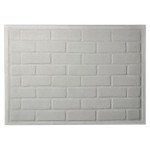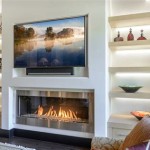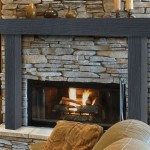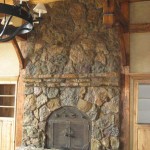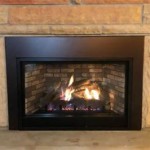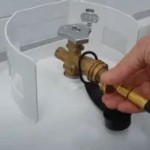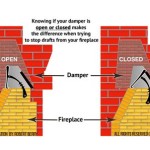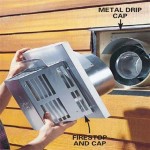Flat To The Wall Fireplaces: A Contemporary Heating Solution
Flat to the wall fireplaces represent a modern approach to home heating, offering a sleek aesthetic and space-saving design compared to traditional fireplace installations. These fireplaces are designed to be mounted directly against a wall, negating the need for a recessed chimney or extensive building modifications. This makes them a popular choice for homeowners looking to add warmth and ambiance to their living spaces without undertaking significant renovations. The functionality and visual appeal of flat to the wall fireplaces have contributed to their growing prominence in contemporary interior design.
The market for flat to the wall fireplaces encompasses a variety of fuel types, including electric, gas, and ethanol. Each fuel type offers distinct advantages and disadvantages in terms of installation requirements, operating costs, and environmental impact. Furthermore, a wide range of styles and finishes are available, ensuring that homeowners can find a model that complements their existing décor. The selection process requires careful consideration of individual needs, preferences, and budgetary constraints.
Space Efficiency and Installation Advantages
One of the primary benefits of flat to the wall fireplaces is their space-saving design. Unlike traditional fireplaces that require a substantial hearth and chimney, these units are relatively compact and can be installed in rooms with limited square footage. This makes them an ideal solution for apartments, condominiums, and smaller homes where space is at a premium. The reduced footprint allows homeowners to maximize usable floor space without sacrificing the comfort and aesthetic appeal of a fireplace.
Installation is generally simpler and less expensive compared to traditional fireplace installations. Electric models, in particular, are known for their ease of installation, often requiring only a standard electrical outlet and minimal assembly. Gas and ethanol models may require professional installation to ensure proper venting and safety compliance, but the overall installation process is typically less complex than that of a traditional masonry fireplace.
The ease of installation also translates to greater flexibility in terms of placement. Flat to the wall fireplaces can be installed in a variety of locations, including living rooms, bedrooms, and even home offices. This versatility allows homeowners to customize their living spaces and create a cozy atmosphere in any room of their choice. The ability to easily relocate some models further enhances their appeal, allowing for repositioning as desired without requiring extensive reconstruction.
Fuel Type Considerations: Electric, Gas, and Ethanol
The choice of fuel type is a critical factor in selecting a flat to the wall fireplace. Each fuel type offers distinct characteristics that influence its suitability for different applications. Electric fireplaces are generally the most convenient and cost-effective option for many homeowners. They operate by converting electrical energy into heat through a heating element, and many models feature realistic flame effects that mimic the appearance of a real fire. They do not produce any emissions and require no venting or gas connections, making them a clean and safe option for indoor use.
Gas fireplaces offer a more realistic flame appearance and can provide a significant amount of heat output. They operate by burning natural gas or propane, and require a gas line connection and venting to the outdoors. While gas fireplaces offer the ambiance of a real fire, they require professional installation and maintenance to ensure safe and efficient operation. They also generate emissions, albeit less than traditional wood-burning fireplaces. The ongoing cost of gas can be a significant factor, depending on local gas prices and usage patterns.
Ethanol fireplaces utilize bioethanol fuel, a renewable and sustainable energy source derived from plant materials. These fireplaces do not require venting or gas connections, making them a relatively easy and flexible option to install. Ethanol fireplaces produce a clean-burning flame and emit only small amounts of carbon dioxide and water vapor. However, they typically offer less heat output than gas or electric models and require regular refilling of the fuel reservoir. The cost of ethanol fuel can also be a significant factor, especially with frequent use. Furthermore, some ethanol fireplaces may have safety concerns associated with handling and storage of the fuel.
Design and Aesthetic Versatility
Flat to the wall fireplaces are available in a wide range of styles and finishes to complement various interior design schemes. From sleek and minimalist models to more ornate and traditional designs, there is a fireplace to suit every taste. The aesthetic flexibility of these fireplaces allows homeowners to seamlessly integrate them into their existing décor, enhancing the overall visual appeal of their living spaces.
Many models feature customizable flame effects, allowing homeowners to adjust the color, intensity, and speed of the flames to create a personalized ambiance. Some models also include built-in features such as remote controls, timers, and thermostats, providing added convenience and control over the fireplace's operation. These features contribute to a more comfortable and enjoyable experience for the user.
The selection of materials and finishes further enhances the design versatility of flat to the wall fireplaces. Models are available in a variety of materials, including stainless steel, glass, stone, and wood. The choice of material can significantly impact the overall aesthetic appeal of the fireplace and its compatibility with the surrounding décor. Finishes range from matte to gloss, allowing homeowners to select a model that best complements their existing furniture and accessories. The design options are numerous, contributing to the enduring popularity of these modern heating solutions.
The growing popularity of flat to the wall fireplaces has also spurred innovation in terms of design. Manufacturers are continually developing new models with advanced features and more realistic flame effects. This ongoing innovation ensures that homeowners have access to a wide range of options that meet their evolving needs and preferences. The integration of smart home technology is also becoming increasingly common, allowing homeowners to control their fireplaces remotely using their smartphones or voice assistants.
Ultimately, the choice of a flat to the wall fireplace depends on a variety of factors, including budget, aesthetic preferences, fuel availability, and installation requirements. Careful consideration of these factors will help homeowners select a model that provides both warmth and visual appeal, enhancing the comfort and enjoyment of their living spaces. The versatility and ease of installation of these fireplaces make them a compelling option for those seeking a modern and efficient heating solution.

Flat Wall Fireplaces Are Us

Flare Collection British Designed Fires Fireplaces Stoves

Can I Have A Fireplace In My Flat The Studio

Recessed Or Wall Mount Electric Fireplace Installations Explained Touchstone Home S Inc

Modern Flames Landscape Pro 94 Electric Fireplace Wall Mounted Suite Very Good

Flat Wall Fireplaces Fireplace Packages

Free Standing Flat Wall Fireplaces Fireplace Gallery Fires Stoves

ᑕ❶ᑐ Wall Mounted Electric Fireplace Basic Guide 2024

ᑕ❶ᑐ Wall Mounted Electric Fireplace Basic Guide 2024

21 Fireplace Upgrades For Any Room Small Living Decor Feature Wall With
Related Posts

